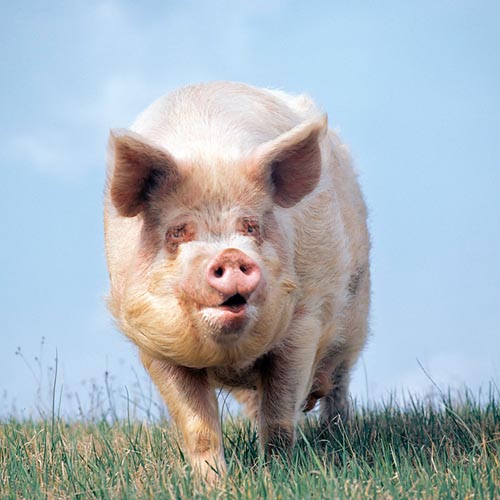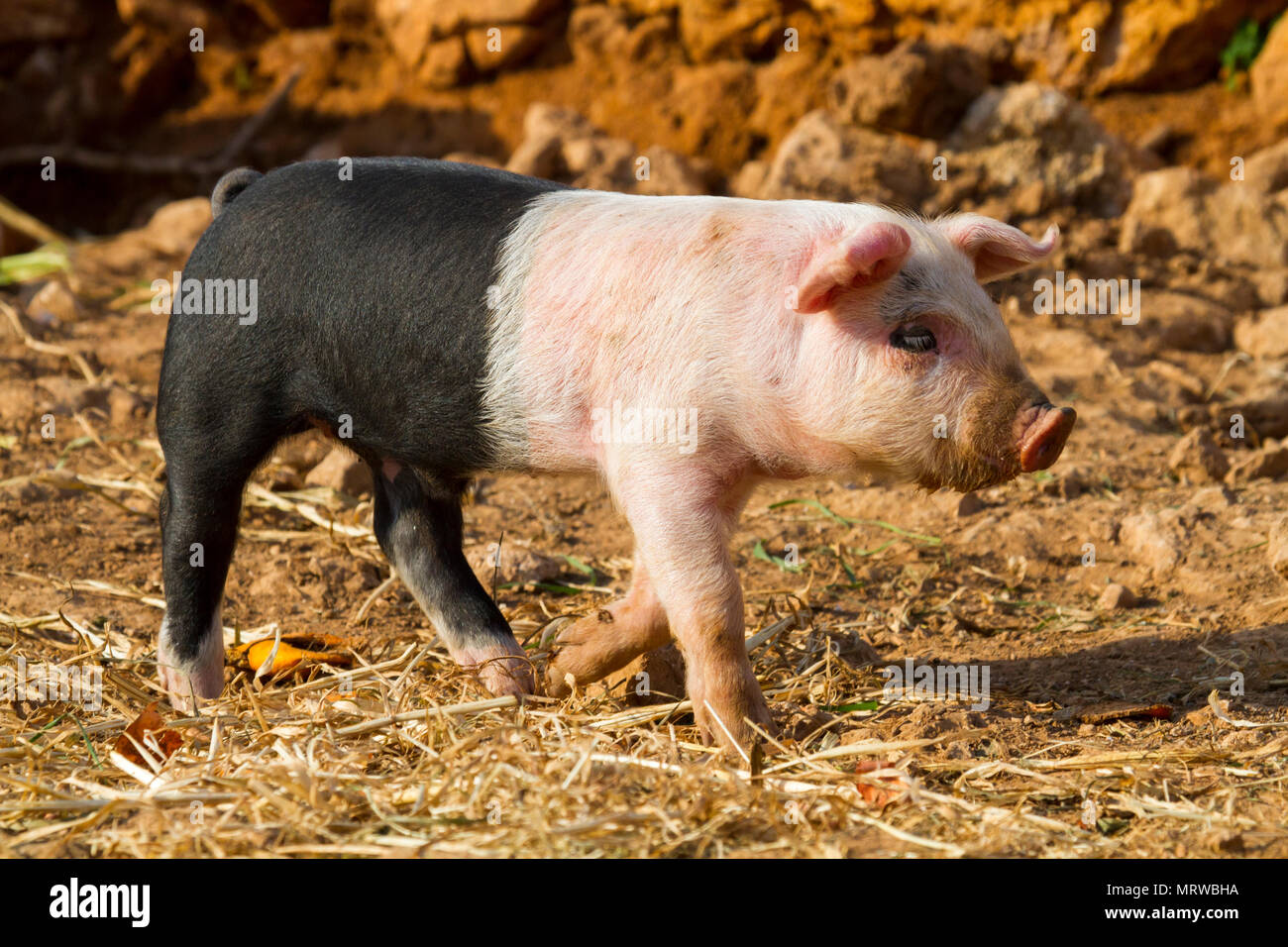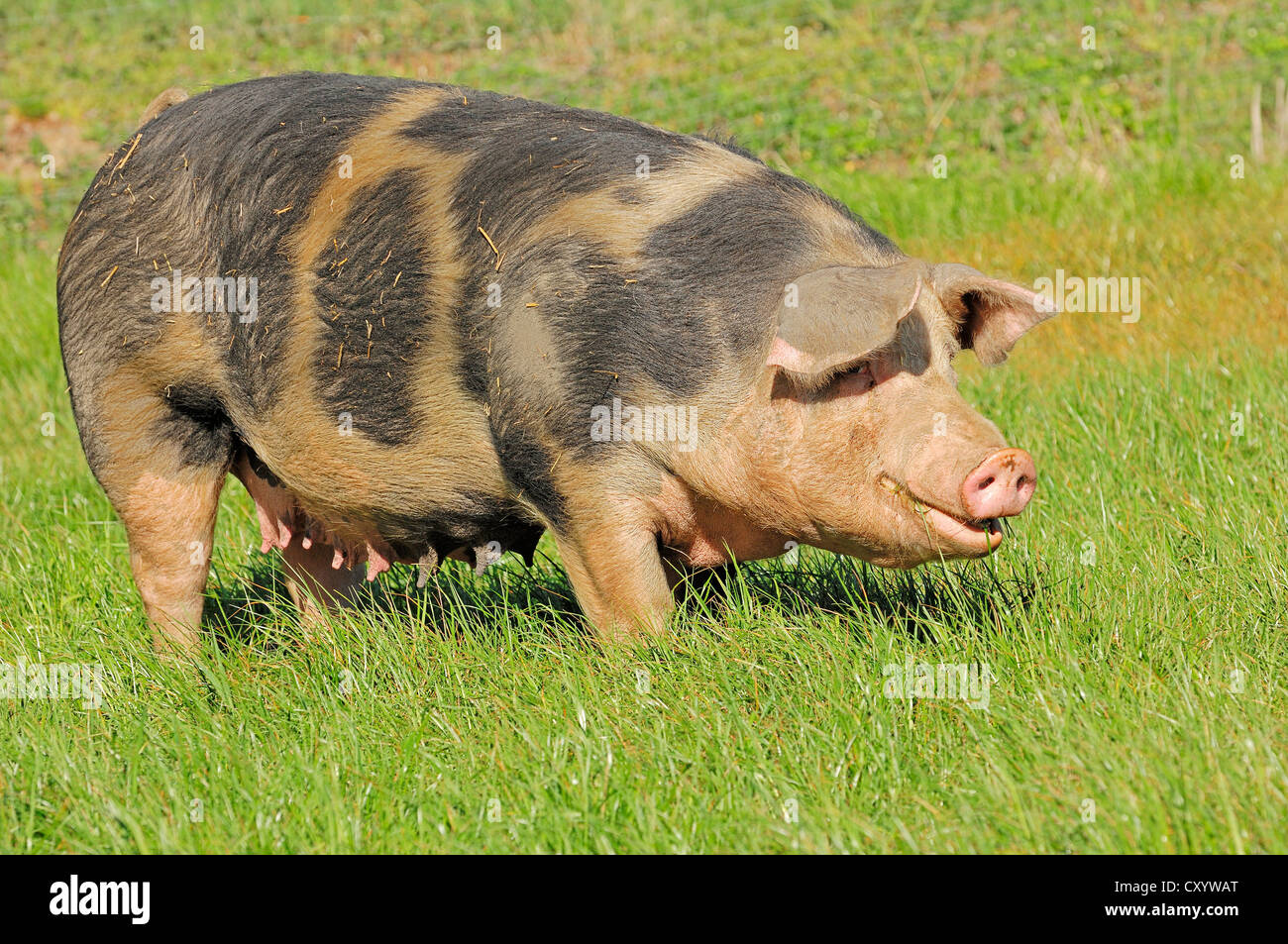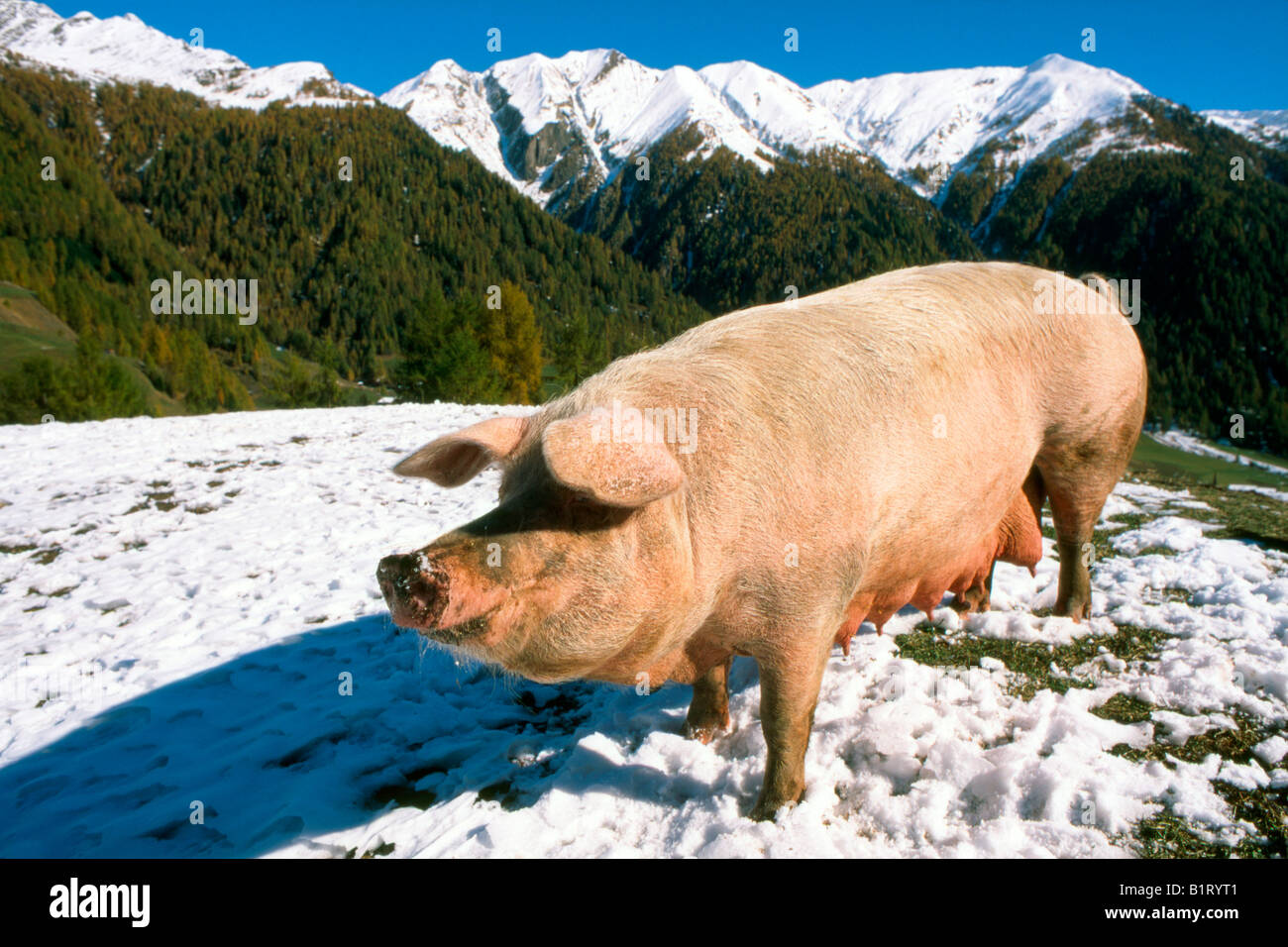
Closeup Of A Sow Or Sus Scrofa Domestica Sitting On A Mud Puddle Looking At The Camera Pig With
Bama miniature pigs are a valuable animal model for biomedical research. This article describes the anatomical, physiological, and biochemical characteristics of these pigs, and compares them with other pig breeds and humans. Learn more about the advantages and limitations of using Bama miniature pigs for various studies.
.jpg)
Sus scrofa domestica (Cerdo vietnamita)
Sixteen species of pigs and hogs in eight genera make up the modern family Suidae. Pigs were domesticated about 10,000 years ago and wild and domestic pigs belong to the same species (Sus scrofa).Wild pigs are classified in the subspecies scrofa L. and the domestic swine in subspecies domestica L. Populations in different parts of the world consist of wild boar, the feral descendants of.

Hausschwein (Sus scrofa domestica), domestic pig (Sus scrofa domesticus) Sus domesticus, swine
10 20 50 100. About. Licensing. Notification of Use. Interactive Cells. Open source. Sus scrofa domestica - Organisms are classified by taxonomy into specified groups such as the multicellular animals, plants, and fungi; or unicellular microorganisms such as a protists, bacteria, and archaea.

Sus scrofa domesticus Monaco Nature Encyclopedia
The domestic pig (Sus scrofa domesticus or only Sus domesticus), often called swine, hog, or simply pig when there is no need to distinguish it from other pigs, is a large, even-toed ungulate. It is variously considered a subspecies of the wild boar or a distinct species.

Vietnamese pot bellied Schwein (Sus scrofa f. domestica), auf einer Wiese, Deutschland
Such processes, including memory, learning, problem solving, and communication, have been studied in an extensive range of species 2, including the domestic pig, Sus scrofa domestica [reviewed in.

Domestic pig (Sus scrofa domestica) is situated in the shed Stock Photo Alamy
The domestic pig (Sus scrofa) is a eutherian mammal and a member of the Cetartiodactyla order, a clade distinct from rodent and primates, that last shared a common ancestor with humans between 79.

Domestic Pig (Sus scrofa domestica) Piglet, colourful, black and white, Majorca, Balearic
El cerdo ( Sus scrofa domestica ), también denominado cochino, chancho, cuche, marrano, porcino, puerco, tibu 1 o tocino, es una subespecie de mamífero artiodáctilo de la familia Suidae. Es un animal doméstico usado en la alimentación humana por muchos pueblos.

Sus scrofa domestica (Domestic Pig) Domestic Pig (Sus scro… Flickr
The domestic pig ( Sus scrofa domesticus Linnaeus, 1758) is one of the animals with major geographic distribution, as it is raised nowadays in Europe, Asia, Africa and Oceania. Biologically, the pig comes from the wild boar ( Sus scrofa ), from whose domestication and breeding, started thousands of years ago, they have selected, due to the loss.

Piglet Sus Scrofa Domestica at an Organic Farm Stock Photo Image of piglet, frontansicht 97401406
The domestic pig (Sus scrofa domesticus) is a polyestrous, polytocous farm animal species.Modern breeds of domestic pigs typically breed year-round. The European wild boar and feral pigs, however, can display a seasonal (July to September) anestrus related to photoperiod and nutrient availability in their natural (wild) environment.

Fondos de Pantalla Sus scrofa domestica Animalia descargar imagenes
current name Sus scrofa domesticus homotypic synonym: Sus domestica Sus domesticus Sus scrofa domestica Genbank common name: domestic pig NCBI BLAST name: even-toed ungulates Rank: subspecies Genetic code: Translation table 1 (Standard) Mitochondrial genetic code: Translation table 2 (Vertebrate Mitochondrial) Lineage ( full )

Domestic Pig (Sus scrofa domestica), yawning Stock Photo Alamy
The pig ( Sus domesticus ), often called swine ( pl.: swine), hog, or domestic pig when distinguishing from other members of the genus Sus, is an omnivorous, domesticated, even-toed, hoofed mammal. It is variously considered a subspecies of Sus scrofa (the wild boar or Eurasian boar) or a distinct species.

Hausschweine (Sus scrofa domestica) werden mit Grünfutter gefüttert, Stallhaltung mit Auslauf
Small; usually a little less than 6 inches in length, including tail. Conspicuous light-colored wingbars. Lacks the conspicuous pale eye-ring of many similar Empidonax species. Overall, body brownish-olive to gray-green above. Throat whitish, breast pale olive, and belly yellowish.

Iberian Domestic Pig (Sus scrofa domestica), on meadow, Alentejo, Portugal Stock Photo Alamy
This work describes the differentiation of European wild boar ( Sus scrofa scrofa) and domestic swine ( Sus scrofa domestica) meats by PCR targeting sequences from two molecular markers: the mitochondrial displacement loop (D-loop) region and the nuclear melanocortin receptor 1 ( MC1R) gene.

Domestic pig (Sus scrofa domestica), freerange, SchleswigHolstein Stock Photo, Royalty Free
Eurasian boars usually appear hairy. Unlike most domestic farm pigs (scientific name: Sus scrofa domestica), Eurasian boars usually have a long straight narrow snout, a long straight tail with a tuft at the end and erect hairy ears. Some have a "mane" of hair that stands up along ridge of their back ("razorback"). Most have large, prominent tusks.

Domestic pig (Sus scrofa domestica), BolzanoBozen, Italy, Europe Stock Photo Alamy
Translation Wikispecies needs translators to make it more accessible. More info on this page. Sus scrofa domesticus Sus scrofa domesticus Taxonavigation Taxonavigation: Suina Familia: Suidae Genus: Sus Species: Sus scrofa Subspecies: Sus scrofa domesticus Name Sus scrofa domesticus ( Linnaeus, 1758) Synonyms Sus domestica Erxleben, 1777

Sus scrofa domesticus Domestic pig 7 by lumibear on deviantART
The pig (Sus scrofa) is a member of the artiodactyls, or cloven-hoofed mammals, which are an evolutionary clade distinct from the primates and rodents.Pigs exist in both feral and domesticated populations that have distinct phenotypes and karyotypes. The haploid genome of the domesticated pig is estimated to be 2800 Mb.